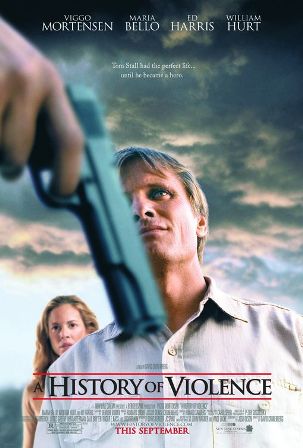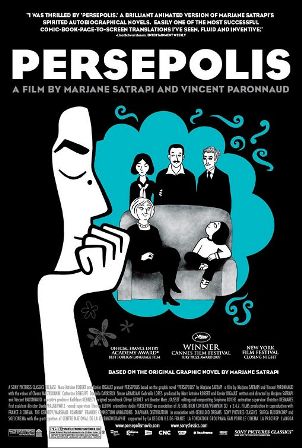CHICAGO – In anticipation of the scariest week of the year, HollywoodChicago.com launches its 2024 Movie Gifts series, which will suggest DVDs and collections for holiday giving.
The 10 Best Non-Superhero Comic Book Adaptations

American Splendor
Photo credit: HBO Films
“American Splendor”
No comic book series has been more blatantly autobiographical than Harvey Pekar’s “American Splendor,” and no comic book adaptation has blended reality and fiction with more ingenuity and brilliance than Shari Springer Berman and Robert Pulcini’s unforgettable comedy. This is the first picture that solidified Paul Giamatti as one of our finest character actors. He completely immerses himself in the cantankerous persona of Pekar, a frustrated file clerk who recruits his friend, R. Crumb, to assist him in creating a comic about his mundane existence, complete with stories about everyday anxieties. His third wife, Joyce Brabner (played by Hope Davis), is a character unto herself, and is featured prominently in the books. Pekar has become an enduring symbol of the all-American outcast, and the film’s exploration of his unflinchingly honest yet self-destructive psyche is both very funny and deeply moving. Berman and Pulcini’s background in documentaries ends up greatly benefitting the picture, as it mixes staged recreations with footage of the real Pekar interacting with friends and family. These sequences offer enduring proof that truth is always stranger, and funnier, than fiction.

Oldboy
Photo credit: Tartan
“Oldboy”
The celebrated second installment in Chan-wook Park’s “Vengeance Trilogy,” is the only one that is loosely based on a manga series by Garon Tsuchiya and Nobuaki Minegishi. The film’s deserved status as a modern masterpiece is reason enough to include it on this list, yet Park’s thrillingly audacious craft also stands as an enduring lesson for filmmakers on how to adapt material without ignoring one’s own stylistic impulses. Sorry Zack Snyder, but this is what a visionary really looks like. Though Park remains faithful to the operatic tragedy of his source material, his film is too vibrantly alive to be the least bit depressing. The story concerns a man, Oh Dae-Su (a fearless Choi Min-sik), who finds himself inexplicably imprisoned in a mysterious room for fifteen years. Upon his sudden release, the enraged everyman hunts down his captor, while falling for a beguiling chef, Mi-do (Kang Hye-jeong). Any further utterance of plot points would be deemed heresy, but needless to say, the film is chockfull of mesmerizing set-pieces, the best of which may be a fight scene where Dae-Su takes on a corridor full of foes in one unbroken take. No self-respecting film lover can afford to miss this golden “Oldboy.”

Sin City
Photo credit: Dimension Films
“Sin City”
In purely visual terms, Robert Rodriguez’s frame-by-frame recreation of Frank Miller’s neo-noir comic series is a hugely impressive masterwork. His unwavering support and utilization of digital technology has led him to create an entirely artificial world that is both meticulously detailed and suffocatingly airless. The characters are all ciphers with no identity apart from that of the movie star personas inhabiting them. It’s as hollow a film as “Dick Tracy,” yet Rodriguez is too hip to feign emotion. He simply jumps from one gleefully repulsive vignette to another until they quickly grow numbing. Clearly, I’m not a major fan of this picture, but I must include it on this list because apart from everything else, it is the first live-action comic book adaptation that makes the audience feel entirely lost within the illustrated landscape of its source material. With a strong assist from Miller, who served as co-director (causing the DGA to have a silly snit fit), Rodriguez impeccably captured the heightened look and brooding atmosphere of the comics, through his use of gleaming black and white, with the occasional startling splash of color. Yet the film is memorable only as a series of disconnected images, some of which are sure to inspire nightmares. As for the film’s ensemble, only Mickey Rourke resonates as an anvil-faced, heartbroken antihero who suggests what “Sin City” could’ve been, had it married its exquisite style with a shred of substance.

A History of Violence
Photo credit: New Line
“A History of Violence”
While the blood-spattered casualties in “Sin City” amounted to little more than an afterthought, the sudden bursts of ferocity in “A History of Violence” pack a genuine wallop. Based on the the graphic novel by John Wagner and Vince Locke, this magnificent psychodrama confronts the troubling matter of violence, and its primal necessity, rather than trivializing or glorifying the novel’s moments of truly graphic bloodshed. David Cronenberg does a masterful job of depicting the film’s peaceful small town setting, complete with hostile cicadas that seem to be buzzing about dark secrets lurking beneath its benign surface. Tom Stall (Viggo Mortensen) is a rock solid father and husband who owns a diner where everyone knows his name, except for the odd man with a dead eye that seems to pierce directly through Tom’s soul. Though Tom has been declared a local hero for offing gun-wielding perpetrators, the mysterious stranger (played by Ed Harris in his “Beautiful Mind” mode) knows that the supposed family man’s actions were inspired by more than mere heroism. Like all Cronenberg pictures, this one is full of surprises, each one more provocative than the last. “Violence” is the first of two great collaborations between Cronenberg and Mortensen, who went on to play the mirror image of Tom Stall in “Eastern Promises.” Maria Bello, Ashton Holmes and William Hurt are all electrifying in their supporting roles. If Frank Capra had the opportunity to collaborate with Gaspar Noé, their resulting film may have looked something like this.

Persepolis
Photo credit: Sony Pictures Classics
“Persepolis”
We end this list where we started, in the realm of animation, though this time the subject matter is more deeply personal than ever. Propelled into exile at age 14, Marjane Satrapi went on to write a two-part autobiographical graphic novel in which she recounted her childhood in revolutionary Iran and her eventual coming-of-age in France. Her deceptively simple black-and-white illustrations conveyed remarkable nuances and complexity, while her biting wit and poignant insight helped the story resonate on a universal level. Though the subsequent film version of her novel is clearly condensed, it is still a marvelous piece of personal cinema. It humanizes a part of the world that has been widely misunderstood and demonized, and views it from the clear-eyed perspective of a young woman whose sole aim is to preserve her connection with an ever-fading past. With a great assist from her team of animators, as well as her fellow comic author and close collaborator Vincent Paronnaud, Satrapi makes her story come to life with more vibrancy and vitality than ever, while creating a dazzling variety of shades and textures without working outside of the novel’s limited color scheme. There are also several memorable moments of humor, though none are as priceless as the rebellious Satrapi’s endearingly off-key rendition of “Eye of the Tiger.”
 | By MATT FAGERHOLM |


